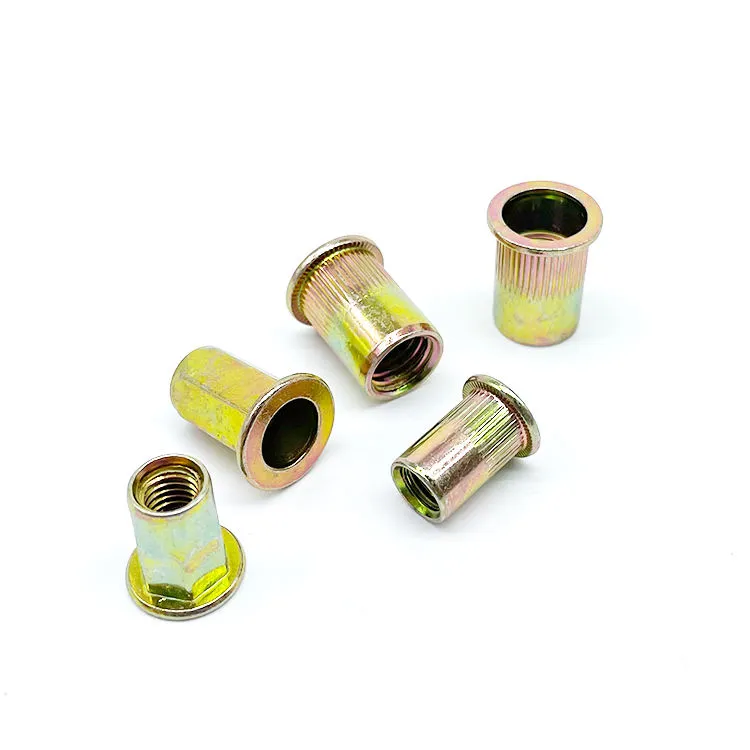

m8 weld stud
Nov . 25, 2024 05:54 Back to list
m8 weld stud
M8 Weld Stud An Overview of its Applications and Advantages
In the world of engineering and construction, the importance of reliable fastening systems cannot be overstated. Among various fastening solutions, the M8 weld stud has emerged as a critical component for many industrial applications. This article delves into what M8 weld studs are, their benefits, and the contexts in which they are commonly used.
What is an M8 Weld Stud?
An M8 weld stud is a cylindrical metal fastener designed to be welded onto a surface to create a stable attachment point. The M8 designation indicates that the stud has a nominal diameter of 8 millimeters, conforming to the metric system. Typically made from materials such as stainless steel, carbon steel, or alloy steel, M8 weld studs are characterized by their robustness and ability to withstand significant mechanical loads.
The stud generally features a shaft with a threaded end, allowing it to accept a corresponding nut or threaded component. The welding process involves securely attaching the stud to a base material—such as steel or aluminum—using techniques like arc welding or resistance welding. This creates a permanent bond that is often stronger than the materials being joined.
Applications of M8 Weld Studs
M8 weld studs are utilized in various industries, including automotive, construction, aerospace, and manufacturing. Here are some notable applications
1. Automotive Industry In vehicle manufacturing, M8 weld studs are used to attach components such as brackets, supports, and more. Their strength ensures that critical parts remain secure even under extreme conditions.
2. Structural Applications In construction, weld studs play an essential role in steel frame building. They can securely attach various structural elements, providing stability and strength to the overall structure.
3. Aerospace Engineering Where weight and durability are paramount, M8 weld studs are employed in aerospace applications for securing panels and components, ensuring safety and reliability in flight.
m8 weld stud

4. Manufacturing Various manufacturing processes utilize M8 weld studs for jigs, fixtures, and assemblies. Their ease of installation and high load-bearing capacity make them ideal for production environments.
Advantages of Using M8 Weld Studs
The growing popularity of M8 weld studs can be attributed to several advantages they offer
- Strength and Durability Weld studs provide a strong mechanical bond that often surpasses the original material's strength. This characteristic is crucial for applications where mechanical fatigue may be an issue.
- Cost-Effectiveness While the initial cost of welding studs may be higher than other fastening methods, the long-term benefits, including reduced maintenance and repairs, can lead to significant cost savings.
- Simplicity of Installation The process of installing M8 weld studs is straightforward, often requiring less time than traditional bolting methods. This efficiency can enhance productivity and lower labor costs during installation.
- Versatility M8 weld studs can be used in myriad applications, from high-stress environments like aerospace to everyday manufacturing processes. This versatility makes them a preferred choice across various industries.
- Low Profile Once welded, M8 studs provide a relatively low profile on the surface, which is beneficial where space is constrained or where a flush surface is desirable.
Conclusion
In summary, M8 weld studs represent a vital component in modern engineering and construction. Their robust design, ease of installation, and ability to provide strong, durable attachments make them highly sought after in various industries. As manufacturing technologies continue to evolve, the demand for reliable fastening solutions like M8 weld studs is likely to increase. As engineers and manufacturers prioritize efficiency, durability, and strength, understanding and utilizing these fasteners will remain essential for the success of numerous projects. Whether in automotive, aerospace, or construction, M8 weld studs are integral to advancing engineering capabilities and ensuring safety and reliability across applications.
Latest news
-
Premium Self Tapping Metal Screws: Strong & Easy Install
NewsAug.02,2025
-
Premium Fasteners Manufacturer | AI-Driven Solutions
NewsAug.01,2025
-
Hot Dip Galvanized Bolts - Hebei Longze | High Strength, Corrosion Resistance
NewsAug.01,2025
-
High-Strength Hot Dip Galvanized Bolts - LongZe | Corrosion Resistance, Custom Sizes
NewsAug.01,2025
-
Best Self Tapping Screws for Drywall - Fast & Secure Installation
NewsJul.31,2025
-
High-Strength Hot Dip Galvanized Bolts-Hebei Longze|Corrosion Resistance&Customization
NewsJul.31,2025

